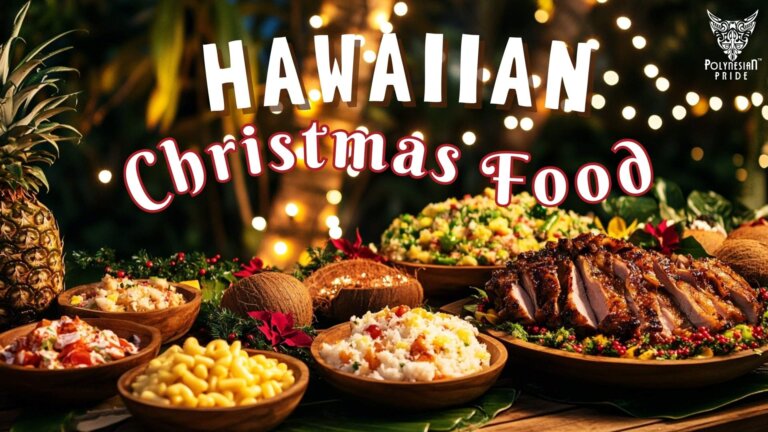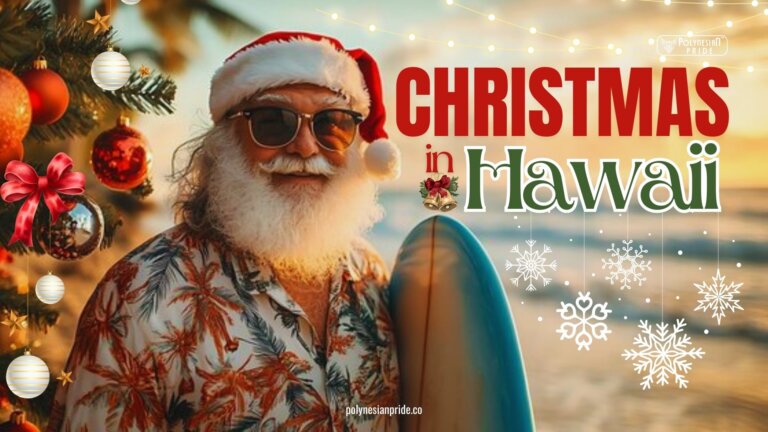Maori People Language: Reviving Aotearoa’s Cultural Heritage

Maori people language, known as Te Reo Māori, is deeply intertwined with the culture and heritage of the indigenous inhabitants of New Zealand. Brought by Polynesian voyagers, Te Reo Māori is more than just a means of communication; it embodies the Māori worldview, values, and connection to the land. Preserving this language is crucial for both the Maori people and New Zealand’s cultural identity.
Understanding Te Reo Maori allows us to appreciate their traditions and engage in meaningful dialogue. Despite the threat of declining usage due to globalization, recent efforts have sparked a significant revival. This article explores the fascinating history, development, modern-day revival, and challenges of keeping this unique language alive.
I. History of Te Reo Maori

Eastern Polynesian Origins (around 1000 AD)
Te Reo Maori traces its roots back to Eastern Polynesia, brought by voyagers who settled in Aotearoa (New Zealand) around 1,000 years ago. Over time, it evolved from Proto-Eastern Polynesian, influenced by languages like Tahitian and Hawaiian. Initially an oral language, it was a vital tool for communication, cultural practices, and knowledge transmission between iwi (tribes) and hapū (sub-tribes).
Colonial Decline (1840s onwards)
European colonization in the 19th century significantly impacted the Maori people’s language. The introduction of English through the education system and the spread of Christianity aimed at cultural assimilation. The Treaty of Waitangi (1840), while intended to protect Māori rights, ultimately led to the marginalization of Te Reo Māori as the English-dominated government, trade, and schools. By the 1950s, only 20% of Māori children spoke it fluently.
Māori Renaissance and Revival (1970s onwards)
The 1970s marked a powerful cultural revival for the Māori people, especially in the resurgence of Te Reo Māori and the renewed pride in traditional New Zealand clothing, which became powerful expressions of identity and resistance.
A prominent figure like activist Dame Whina Cooper played a crucial role in raising awareness about the importance of language preservation. The Te Reo Māori Society (1972) was instrumental in promoting its use and teaching resources. The establishment of Kura Kaupapa Māori (Māori immersion schools) in the 1980s further revitalized the language among younger generations. These schools provided a full curriculum in Te Reo Māori, fostering fluency and cultural identity.
Governmental Support (1987 onwards)
Recognizing its cultural significance, the government supported Te Reo Maori’s revival. In 1987, the Maori Language Act declared it an official language of New Zealand, granting it equal status to English. The Maori Language Commission (now Te Taura Whiri i te Reo Māori) was established to oversee implementation and provide resources. The commission is vital in promoting language use in media, developing educational resources, and advocating for language rights.
II. Linguistic Features of Te Reo Māori

Te Reo Maaori’s unique structure and components offer a fascinating glimpse into Maori culture and values. Understanding these features allows us to appreciate the language’s complexity of Maori language and its deep connection to the Māori worldview. Let’s delve into some key aspects:
Phonetics and Pronunciation
- Vowel Harmony: In addition to vowel length, Te Reo Māori features vowel harmony, where vowels within a word are either front vowels (a, e, i) or back vowels (o, u). This harmony adds another layer of pronunciation complexity and melodic beauty to the language. Imagine the vowels within the word “singing together”.
- Whanaungatanga Reflected in Language: The concept of whanaungatanga (kinship and connection) is ingrained in Te Reo Māori. This is evident in the use of inclusive pronouns like “tātou” (we) and “rātou” (they), emphasizing collectivism and interconnectedness.
Grammar and Syntax
- Particles and Te Reo Māori Meaning: Te Reo Māori utilizes particles extensively to modify verbs and add grammatical functions. For example, the particle “kei” indicates continuous action, while “i” marks the past tense. Understanding these particles is crucial for constructing grammatically correct sentences.
- Verb Conjugation and Duality: Verbs in Te Reo Māori are conjugated to reflect the speaker, action, and number (singular or plural). Interestingly, the language also incorporates duality, acknowledging singular and dual entities (we two, they two). This reflects a nuanced way of perceiving the world.

Vocabulary and Common Phrases
The richness of Te Reo Māori vocabulary reflects the Maori people‘s close relationship with their environment and cultural practices. Many words are descriptive and evocative, conveying a deep understanding of the natural world.
Example: “Whānau” (family) encompasses not just immediate family but also extended relatives and ancestors, highlighting the importance of whanaungatanga. This illustrates how language and culture are intricately intertwined in Te Reo Māori.

Common Phrases (to get you started)
- Kia ora – hello, hi, welcome.
- E hoa – friend, mate.
- Aroha – love, compassion.
- Whānau – family, extended family.
- Kai – food.
- Ka pai – excellent/okay.
- Haere mai – come here, welcome.
- Haere rā – goodbye.
- Tino pai – very good, great.
III. Te Reo Māori in Modern New Zealand
Education and Language Programs
The education sector has been pivotal in revitalizing Te Reo Māori, making it a vibrant presence in modern New Zealand. Schools across the country now offer Maori people language classes. At the same time, some have even adopted bilingual programs, immersing students in Te Reo Māori and English. Numerous community-based language programs and courses also cater to adults seeking to learn Te Reo Māori.
One notable educational initiative is the Kura Kaupapa Māori (Māori immersion schools). These schools provide education solely in Te Reo Māori, incorporating Maori culture and values into their curriculum. They serve as crucial institutions in preserving the language and passing it on to future generations.

Media and Technology
The digital age has further amplified the promotion and preservation of a. Māori Television, a free-to-air channel, broadcasts Te Reo Maori and English programs, reaching a diverse audience. Radio stations like Radio Kahungunu and Te Upoko o te Ika dedicate their airwaves solely to Te Reo Māori, providing a platform for native speakers and learners to engage with the language.
Moreover, many apps and online resources have emerged, making Te Reo Māori learning more accessible. These tools offer interactive and engaging ways to learn the language, from basic vocabulary to more advanced grammar and sentence structures. Popular options include the Te Reo Māori app by Kura Kaupapa Māori o Nga Kura a Kaihoro and the online courses offered by Te Taura Whiri i te Reo Māori (the Maori Language Commission).
IV. Cultural Significance of Te Reo Māori
Te Reo Māori transcends mere communication; it embodies the soul of Maori culture. To understand its profound significance, we must delve into its role in shaping identity, heritage, and traditional practices.
Identity and Heritage
For the Maori people, Te Reo Māori forms the bedrock of their identity and heritage. It acts as a bridge to their ancestors and their land, fostering a deep sense of belonging and pride. Through Te Reo Māori, they express their unique worldview, cultural practices, and spirituality. Consequently, preserving and revitalizing this language is vital for safeguarding the very essence of Maori culture and identity.
Traditional Ceremonies
Te Reo Maori is intricately woven into the fabric of traditional ceremonies and practices, strengthening cultural connections and community spirit. Powhiri (welcoming ceremonies) and whaikorero (formal speeches) are often conducted in Te Reo Māori, ensuring the language’s continued use and transmission to future generations. These ceremonies serve as significant cultural markers crucial in solidifying Māori communities.
V. Challenges Facing Maori People Language
Despite significant progress in revitalizing Te Reo Māori, the language still faces challenges in the modern world. Understanding these hurdles is crucial for ensuring its continued survival and vibrancy.
The Legacy of Colonization and Urbanization
Historically, colonization significantly impacted Te Reo Māori usage. Today, urbanization and globalization further contribute to the decline of native speakers. As Maori people move away from traditional lands where the language thrives, English dominance in urban centers presents a significant challenge.
Impact of Technology and Social Media
The rise of technology and social media presents new hurdles. The prevalence of English online and the tendency to replace Maori words with English equivalents raise concerns about the language losing its unique digital presence. This “digital divide” can further marginalize Te Reo Maori unless efforts are made to include it in online platforms and encourage its use in the digital age.
Preserving Identity and Promoting Revitalization
The decline of Te Reo Maori can significantly impact the preservation of Māori cultural identity. The language is intricately linked to Māori traditions, values, and worldviews. Continued efforts are needed to address these challenges and promote the revitalization of Te Reo Māori. This includes initiatives like:
- Immersion Education: Expanding Kura Kaupapa Māori (Māori immersion schools) and other language learning programs.
- Media Representation: Increasing the use of Te Reo Maori in television, radio, and online platforms.
- Community Engagement: Encouraging and supporting Te Reo Māori usage in everyday life through community events and initiatives.
VI. How to Learn Te Reo Māori
Educational Resources
Te Reo Maori learning is accessible with a diverse range of resources! Whether you’re a bookworm, a visual learner, or an auditory enthusiast, there’s a perfect fit for you:
- Books: Dive deep with comprehensive Te Reo Māori grammar books, phrasebooks, and illustrated dictionaries.
- Online Courses: Explore interactive online courses catering to all levels, from beginner to advanced.
- Community Classes: Immerse yourself in a vibrant learning environment with local Te Reo Māori classes.
Practice and Immersion
Learning goes beyond theory! Here are key strategies to solidify your Maori people language skills:
- Regular Practice: Consistency is key! Dedicate time daily or weekly to practice vocabulary, pronunciation, and sentence structures.
- Embrace Everyday Te Reo Māori: Integrate the language into your daily life. Listen to Te Reo Maori music, watch movies with subtitles, or label objects in your house with their Te Reo Māori names.
Language Exchange and Community Engagement
Active engagement is vital for language fluency! Here’s how to connect with the language and its people:
- Language Exchange Programs: Partner with a native speaker for mutually beneficial language learning experiences.
- Community Events: Immerse yourself in Maori culture by attending events like powhiri (welcoming ceremonies) or kapa haka (cultural performances). Participating in these events allows you to practice Te Reo Māori in a natural setting and connect with the Maori community.

Conclusion
Te Reo Maori transcends mere communication; it is the lifeblood of Maori culture and heritage. Preserving and revitalizing Maori people language is vital for safeguarding Maori traditions and ensuring their transmission to future generations. Despite facing challenges like urbanization and language shift, Te Reo Māori is experiencing a remarkable revival through education initiatives, media exposure, and community engagement. Let’s work together to ensure Te Reo Māori remains a cornerstone of our shared heritage, echoing through generations to come.
Frequently Asked Questions
What language did the Maori people speak?
Te Reo Māori is the native language of New Zealand. It is spoken by the native Māori people and is used to express their culture, heritage and identity. Both Māori and Pakeha (Europeans) use Te Reo Māori.
Is it okay to say Kia ora?
Kia ora can be used to wish somebody life and health—the word ora used as a noun means “life, health and vitality”. It might also be used as a salutation, a farewell or an expression of thanks. It also signifies agreement with a speaker at a meeting, being as it is from a culture that prizes oratory.
What language is closest to Māori?
Of this big family of languages, Māori is most closely related to those of the Cook Islands and French Polynesia. When the ancestors of the people who later called themselves Māori first arrived in what became known as Aotearoa in the late 13th century, they brought their Polynesian language with them.
When was te reo banned?
It’s the same as the erasure of Maori language, which the government tried to do with the 1867 Native Schools Act, where te reo was banned and children were beaten for speaking it. Many Māori of older generations grew up without te reo, so the cultural ecosystem was destroyed.

I am Leilani Miller – I research focusing on Vanuatu – volcanic landscapes, blue holes, coral reefs & rainforests. I have over five years of experience researching and sharing insights on tourism and environmental activism. Explore and experience without limits through my latest article.
Contact information:
Email: [email protected]
Tel: +1 (808) 555-1528






